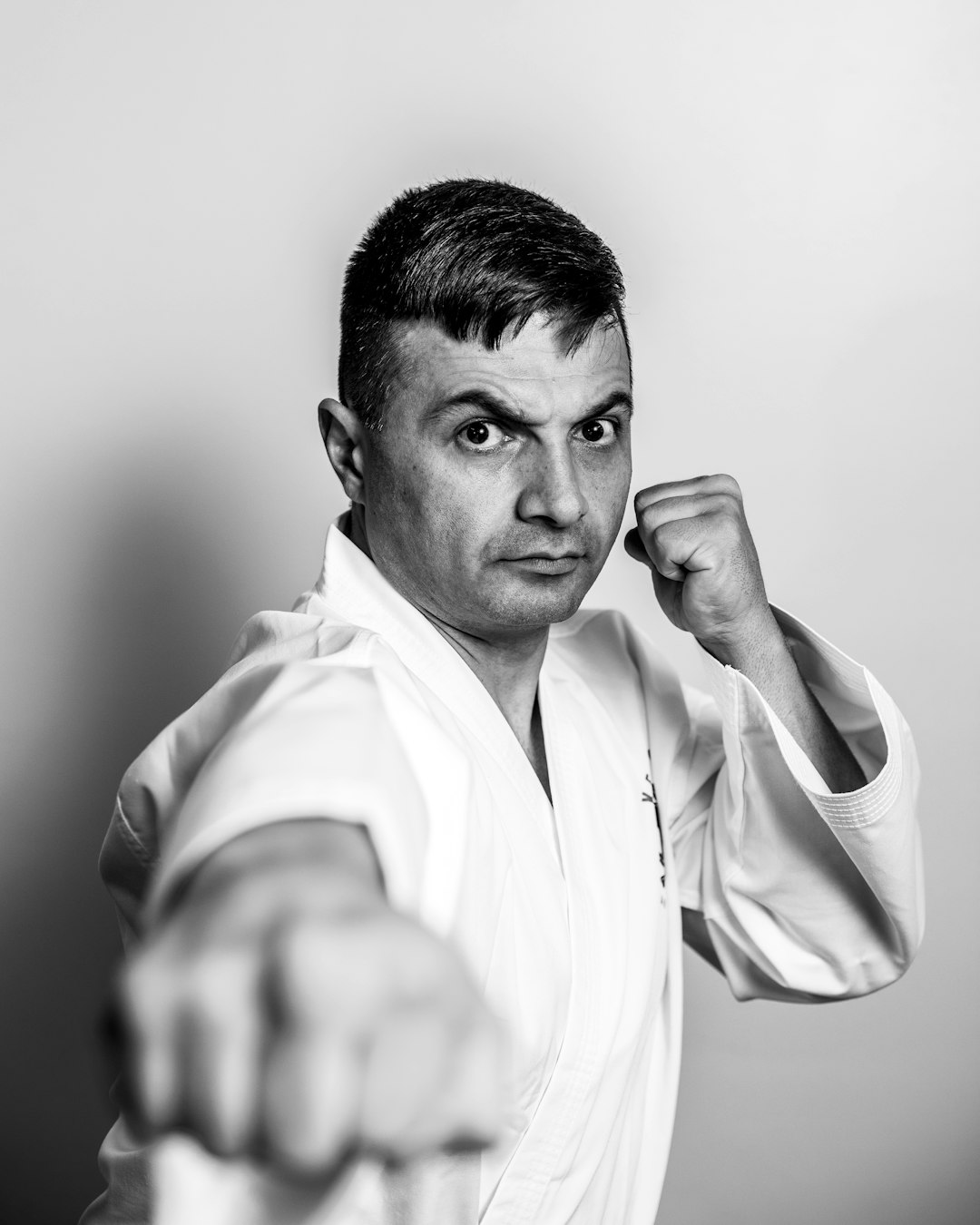When training karate at home, wearing a traditional martial arts uniform, or gi, is not just a matter of adhering to tradition but also a practical choice that enhances performance and technique. The cotton fabric of the gi ensures both durability and breathability, allowing for comfortable and focused practice sessions. The structured design of the gi helps instructors assess stances, posture, and movements clearly, which is essential for proper form and technique evaluation. Investing in a quality karate gi that fits well and offers features like secure closures, moisture-wicking properties, and reinforced stress points is crucial for both comfort and authenticity in home training. Additionally, the gi's traditional white color symbolizes purity and humility, aligning with the disciplined nature of karate practice. Maintaining the gi through proper care, avoiding harsh detergents, direct sunlight, and tumble drying, will preserve its condition and honor the martial arts tradition. This upholds the significance of the gi in reinforcing the mindset required for effective karate training at home, whether as a beginner or an advanced practitioner.
Martial arts practitioners, whether seasoned or novice, understand the pivotal role that their uniforms play in their training. Often referred to colloquially as ‘kimonos’ or simply ‘gi,’ these garments are more than mere attire; they are a traditional emblem of respect and discipline within the martial arts community. This article delves into the essence of martial arts uniforms, with a focus on karate, exploring their significance, evolution, and the nuances of selecting and caring for a gi suitable for training ‘karate at home.’ Whether you’re an enthusiast honing skills in solitude or an instructor guiding students, insights on key features and maintenance tips will ensure your uniform withstands the rigors of practice while upholding the traditions of the martial art.
- Understanding the Significance of Martial Arts Uniforms for Training Karate at Home
- The Evolution and Varieties of Gis: A Global Perspective
- Key Features of a Quality Karate Gi for Home Practice
- Choosing the Right Martial Arts Uniform for Comfort and Performance
- Maintaining and Caring for Your Karate Gi for Maximum Durability and Respect
Understanding the Significance of Martial Arts Uniforms for Training Karate at Home
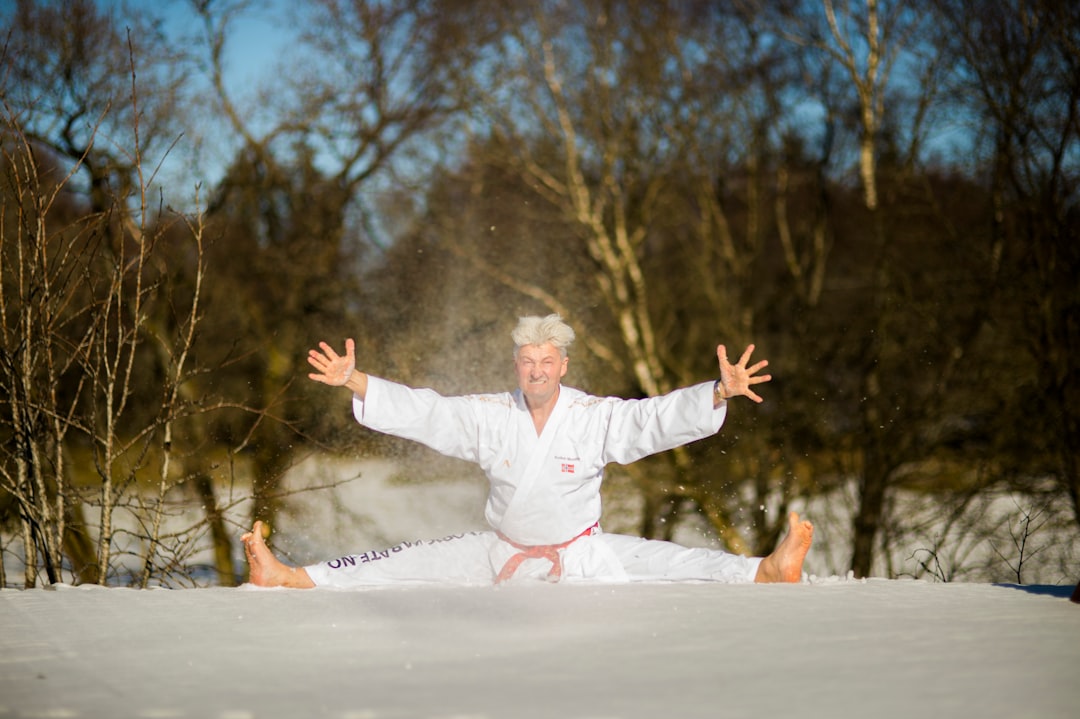
Martial arts uniforms, commonly known as “gi” or “keikogi” in Japanese martial arts, serve a dual purpose during training karate at home: they provide a standardized attire that facilitates movement and allows for accurate assessment of technique and form. The gi’s fabric, typically cotton, offers both durability and breathability, essential for maintaining comfort and focus throughout practice sessions. Additionally, the structured design of the uniform helps instructors evaluate a student’s stance, posture, and movements without distraction. Are the benefits of using a martial arts uniform at home evident? Absolutely; not only do they offer practical functionality in terms of movement and durability, but they also contribute to the discipline and respect inherent in martial arts training by providing a clear distinction between daily wear and training attire. This distinction reinforces the mindset necessary for effective karate practice, whether one is under the watchful eye of a sensei or practicing alone. When training karate at home, the uniform becomes a tangible representation of commitment to the art and a consistent reminder of the respect owed to oneself and the discipline of martial arts.
The Evolution and Varieties of Gis: A Global Perspective
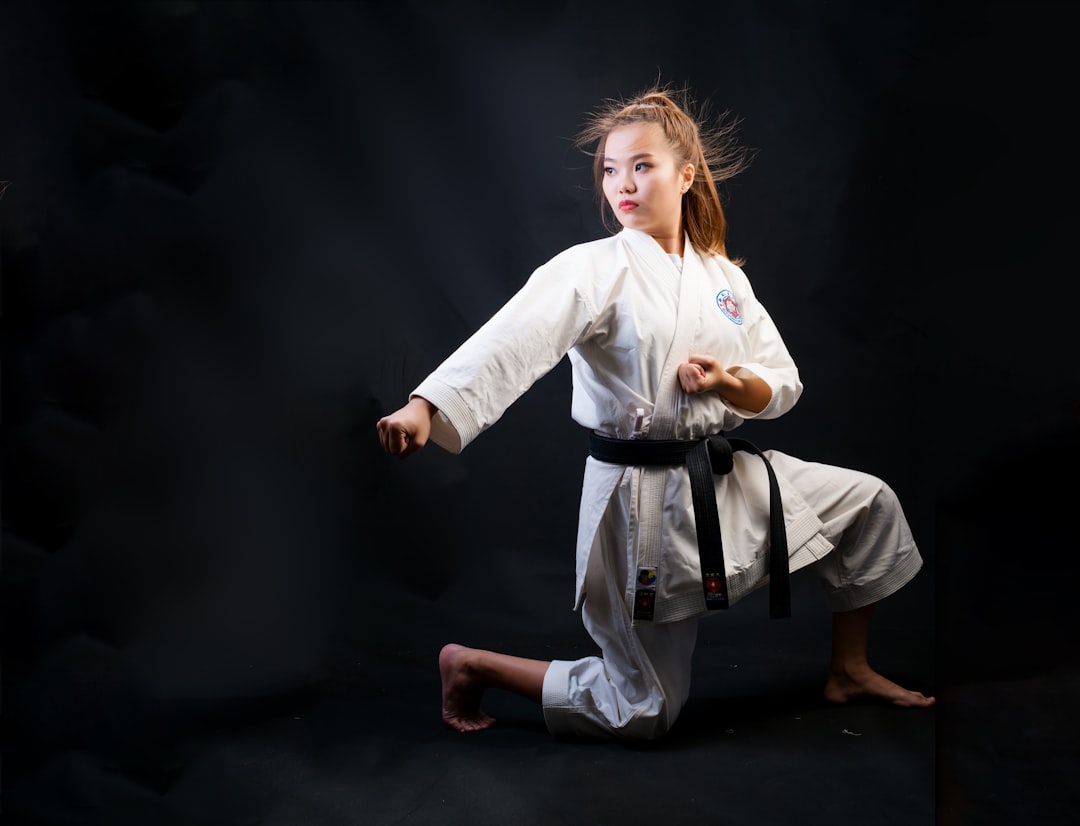
The evolution and varieties of martial arts uniforms, commonly referred to as gis, offer a fascinating glimpse into the global spread and adaptation of martial arts practices. Originating from Japan, where they were originally known as “keikogi,” these garments have undergone significant transformations over time, both in design and function. In the early days, the traditional gi was a practical training tool for judo practitioners, characterized by its simple design with a jacket, trousers, and belt, allowing for easy movement during practice. Over the years, as martial arts like karate gained popularity worldwide, the gi’s evolution continued, adapting to the cultural nuances of different regions while maintaining its core function. Today, gis are not only standard in traditional dojos but also integral to the practice of martial arts at home and in various training environments.
Traditional gis typically consist of a white jacket and trousers with a belt indicating the wearer’s rank, but variations exist across different styles and schools. For instance, Brazilian Jiu-Jitsu gis are often made of heavier cotton material and may have color options beyond white. In contrast, judo gis tend to be lighter and have fewer reinforcements on stress points due to the nature of the throws and grappling involved in the sport. Karate practitioners, when training at home or in a dojo, will often select a gi that complies with their particular style’s preferences, whether it be for competition, daily practice, or simply as part of the martial arts tradition. The choice of fabric, from lightweight weave to heavy canvas, varies based on personal preference, climate, and the specific discipline being practiced. Whether in Japan, Brazil, or anywhere in between, the gi remains a symbol of respect for the martial art and its practitioners, uniting them across continents in shared tradition and practice.
Key Features of a Quality Karate Gi for Home Practice
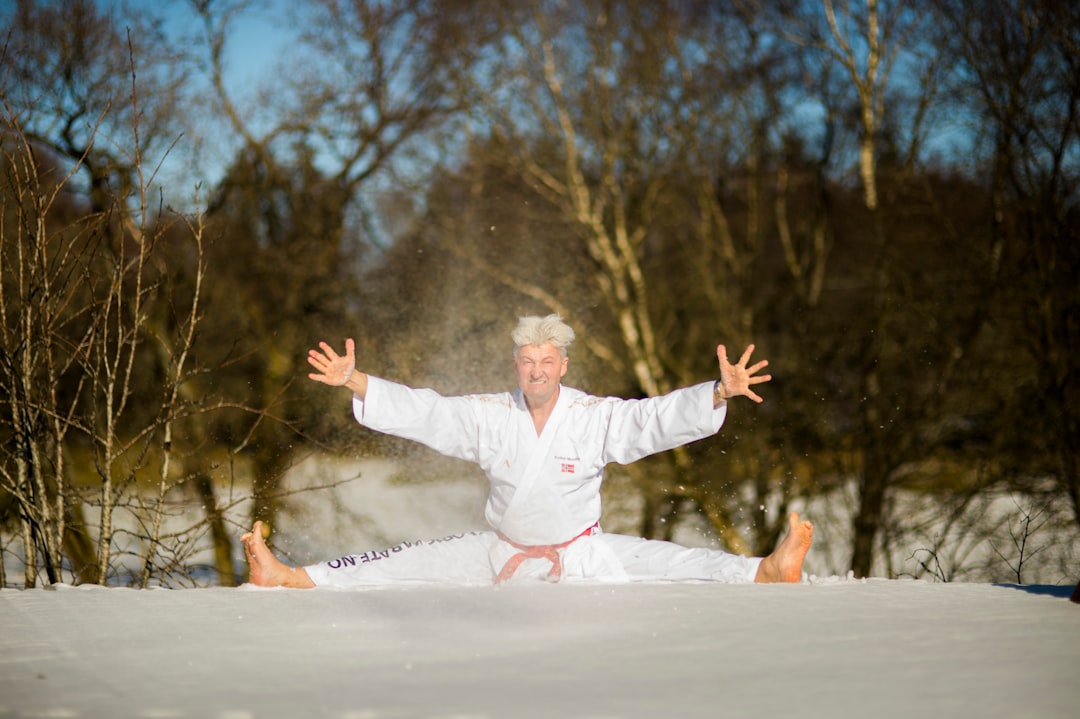
When training karate at home, having a quality Karate Gi is essential for both comfort and authenticity. A top-tier Gi should be made from a durable and breathable cotton fabric that allows for easy movement and helps regulate body temperature during intensive practice sessions. Does the Gi meet these requirements? Yes, a high-quality Gi is constructed with heavyweight, pre-shrunk cotton, which not only resists wear but also wicks away moisture to keep you cool and comfortable. Additionally, the Gi should feature a secure closure system, typically a double-stitched jacket with reinforced collar and cuffs to ensure longevity and maintain proper form during techniques like katas and kicks. Are the fasteners robust enough? Indeed, reliable fasteners, such as heavy-duty buttons and strong stitching, are critical for maintaining the Gi’s shape and preventing it from coming undone during practice. Moreover, the fit of the Gi is crucial; it should be neither too tight nor too loose, allowing for a full range of motion without being overly baggy. Is the sizing true to size? Yes, reputable Karate Gis come in sizes that cater to different body types and heights, ensuring a snug yet flexible fit for home practice. Lastly, consider the Gi’s color; traditionally, Karate Gis are white, symbolizing purity and humility, which is fitting for the disciplined practice of karate at home.
Choosing the Right Martial Arts Uniform for Comfort and Performance
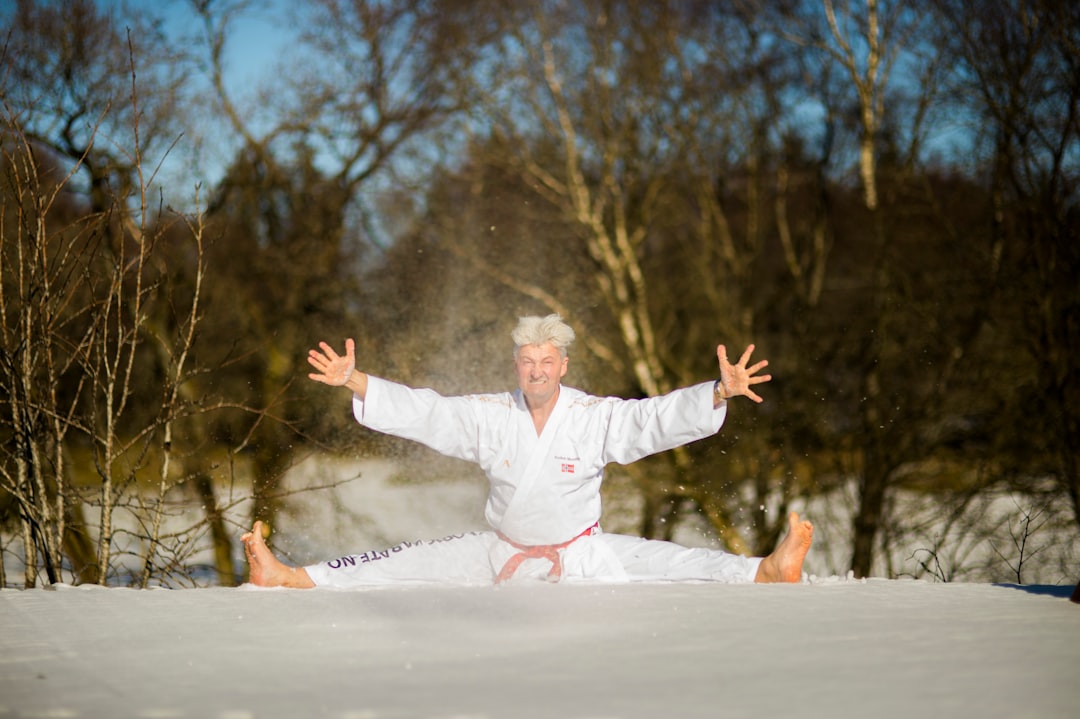
When training karate at home, selecting a martial arts uniform that balances comfort and performance is crucial. The right uniform not only supports your movements but also facilitates optimal learning and practice conditions. Are you looking for a garment that allows for unhindered movement during your kata practice or sparring sessions? Consider the fabric’s weight, as a lighter material will provide more flexibility, making it ideal for dynamic maneuvers. Additionally, the fit of the uniform should be snug yet not restrictive; it should stay in place without causing discomfort or distraction. Is the uniform you’re considering made from a moisture-wicking fabric? This feature is essential for managing sweat and maintaining dryness throughout your training, ensuring you remain focused and comfortable throughout your train karate at home sessions. Breathable materials are also important to consider; they help regulate body temperature, which can fluctuate during intense workouts. By carefully selecting a martial arts uniform that addresses both comfort and performance needs, you’ll be better equipped to enhance your training experience and progress in your martial arts journey.
Maintaining and Caring for Your Karate Gi for Maximum Durability and Respect

When it comes to maintaining and caring for your karate gi, or training uniform, it’s essential to ensure its longevity and uphold respect both for the tradition of the sport and for the uniform itself. Regular cleaning is crucial; however, it’s important not to wash your gi too frequently, as this can lead to wear and tear. Instead, allow airing between uses to keep it fresh. When washing, use a mild detergent and cold water to protect the fabric. Is it okay to use bleach on my karate gi? No, bleach can damage the cotton fabric and cause the white belt stripes to fade, which is why it’s best to opt for a gentle, color-safe bleach alternative if you need to sanitize the uniform.
After washing, hang the gi to dry flat or on a drying rack out of direct sunlight to prevent shrinking and maintain its shape. Avoid tumble drying, as the heat can cause the fabric to become misshapen or lose its integrity. When folding your gi, do so neatly to avoid creases that might have to be ironed out later. It’s also wise to store your gi on a clean, dry hanger in a cool, well-ventilated area away from moisture and sunlight. By following these care instructions, you can extend the life of your karate gi and maintain the respect it represents in the practice of martial arts at home or in a dojo setting.
In conclusion, martial arts uniforms, commonly known as gis in the realm of karate and other Japanese martial arts, serve as more than mere attire; they are emblematic of respect, tradition, and functionality within the discipline. From understanding their significance in training karate at home to recognizing the global evolution and varieties of gis, it’s clear that selecting the right uniform is pivotal for comfort, performance, and adherence to the practice. A quality gi for home practice should embody key features that facilitate effective training while upholding the martial artist’s respect for the art. Proper maintenance ensures the longevity of your gi and honors the tradition of karate. Whether you’re an experienced practitioner or new to training karate at home, the right uniform is instrumental in your martial arts journey.
